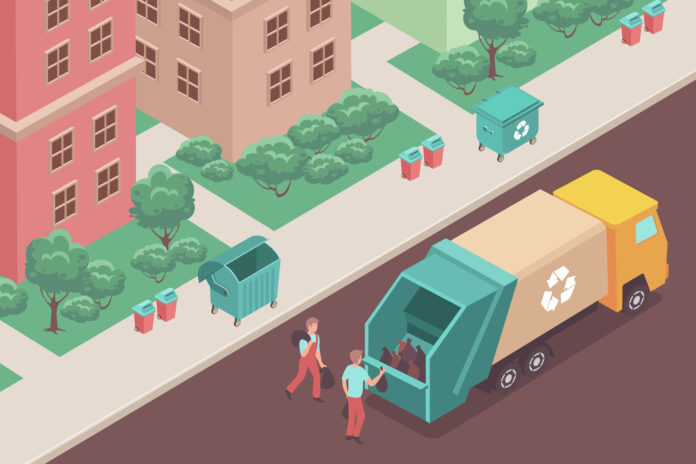
In a world increasingly burdened by the weight of waste, there’s a growing imperative to transform our approach to managing it. With the global population surging and consumption patterns evolving, traditional waste management methods are proving inadequate. However, amidst the challenges lie opportunities to turn trash into treasure through innovative solutions that not only mitigate environmental harm but also unlock economic and social benefits. In this guest post, we delve into the realm of transformative waste management solutions, exploring how creative thinking and technological advancements are reshaping our relationship with waste.
The Urgency of Transformation
At the heart of the waste management crisis lies a stark reality: our current systems are unsustainable. Landfills overflow, oceans choke with plastic, and greenhouse gas emissions from waste contribute to climate change. Addressing these issues demands a paradigm shift from linear to circular thinking, where waste is regarded not as a burden but as a resource waiting to be tapped.
The Rise of Circular Economy Models
One of the most promising approaches to waste management is the adoption of circular economy principles. Unlike the traditional linear model of “take, make, dispose,” a circular economy seeks to keep resources in use for as long as possible, extract maximum value from them, and then recover and regenerate products and materials at the end of their service life. This approach minimizes waste and maximizes resource efficiency, creating a closed-loop system that benefits both the environment and the economy.
Innovative Recycling Technologies
Central to the transition towards a circular economy are innovative recycling technologies that enable the recovery and repurposing of materials from various waste streams. Advanced sorting techniques, such as artificial intelligence and robotics, enhance the efficiency and accuracy of recycling processes, allowing for greater recovery rates and higher-quality recycled materials. Additionally, advancements in chemical recycling offer the potential to break down complex waste streams into their constituent molecules, enabling the creation of new products without degradation in quality.
Waste-to-Energy Solutions
Another transformative approach to waste management involves converting waste into energy through processes such as incineration, anaerobic digestion, and gasification. These waste-to-energy technologies not only reduce the volume of waste sent to landfills but also generate electricity, heat, or biofuels that can offset the use of fossil fuels. Furthermore, capturing and utilizing the methane produced by decomposing organic waste can significantly mitigate greenhouse gas emissions, thus combating climate change while simultaneously addressing waste management challenges.
Harnessing the Power of Biotechnology
Biotechnology holds immense potential for transforming waste into valuable resources. Microorganisms can be engineered to break down organic waste more efficiently, converting it into biogas, biofuels, or biochemicals. Similarly, bioremediation techniques leverage the natural abilities of certain microorganisms to degrade pollutants in contaminated soil or water, offering eco-friendly solutions to environmental cleanup efforts. By harnessing the power of biotechnology, we can unlock new pathways for waste valorization and environmental stewardship.
Community-Led Waste Reduction Initiatives
Beyond technological innovations, community-led initiatives play a crucial role in driving transformative change in waste management. Grassroots movements advocating for waste reduction, recycling, and composting empower individuals and communities to take ownership of their waste footprint. By promoting awareness, education, and behavior change, these initiatives foster a culture of sustainability and collective action, inspiring people to embrace more responsible consumption and waste disposal practices.
Public-Private Partnerships for Sustainable Solutions
Collaboration between government agencies, businesses, academia, and civil society is essential for implementing comprehensive waste management solutions. Public-private partnerships can leverage the expertise, resources, and networks of multiple stakeholders to develop and implement integrated waste management strategies. By fostering innovation, sharing best practices, and aligning incentives, these partnerships drive progress towards a more sustainable and resilient waste management infrastructure.
Conclusion: Turning Vision into Reality
The transition from trash to treasure requires a concerted effort from all sectors of society. By embracing innovation, adopting circular economy principles, and fostering collaboration, we can unlock the full potential of waste as a valuable resource. Together, we can create a future where waste is minimized, resources are maximized, and communities thrive in harmony with the environment. It’s time to turn our vision of transformative waste management solutions into reality and pave the way towards a cleaner, greener, and more prosperous world.
In conclusion, transforming waste into treasure is not just a lofty aspiration; it’s an imperative for sustainable development and environmental stewardship. By harnessing the power of innovation, collaboration, and community engagement, we can chart a course towards a more circular and resilient waste management system. From recycling technologies to community-led initiatives, the solutions are within reach. It’s time to seize the opportunity and embark on the journey from trash to treasure.




















